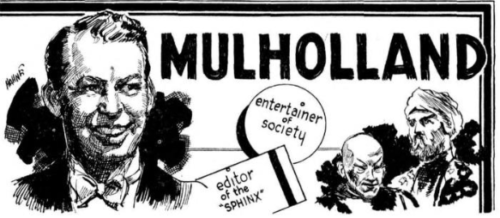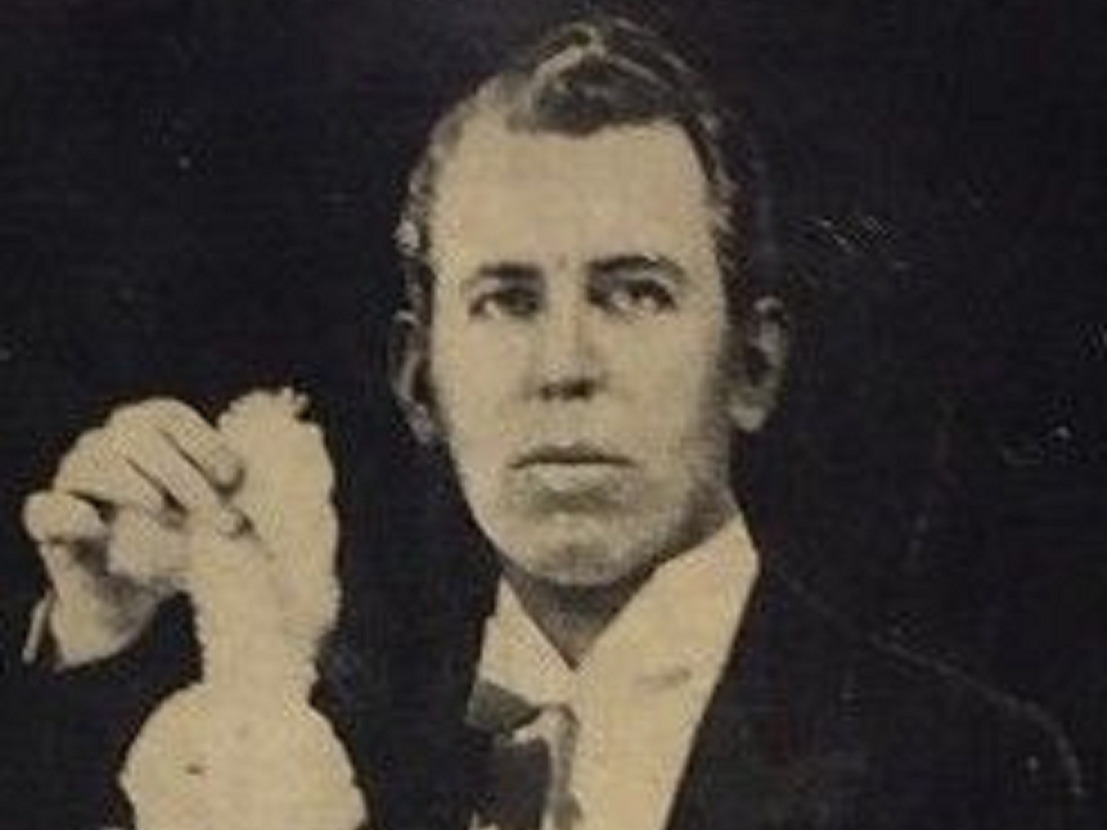The magician John Mulholland. Photo from “Story of Magic”, Loring & Mussey. 1935. Cropped.
I find it far simpler to fool an audience of Princeton undergraduates than a kindergarten class, and it is even easier to mystify a group of your professors.” — John Mulholland.
John Mulholland, born as John Wickizer on June 9, 1898, in Chicago, Illinois, was an American magician, author, publisher, and intelligence agent. . His journey into the world of professional magic began in 1913, while he was still a student. His academic pursuits led him to Columbia University and the College of the City of New York. Between 1919 and 1925, Mulholland taught industrial arts at Horace Mann School, which served as a supplementary source of income.
As a teenager, Mulholland embarked on his journey into the world of magic under the tutelage of John William Sargent, who was then the President of the Society of American Magicians. His professional career as a magician spanned two decades, during which he performed in both intimate settings and grand stage shows. Mulholland was a pioneer in his field, establishing one of the earliest workshops dedicated to magic. From 1930 onwards, he took on the role of editor for The Sphinx, a renowned magazine in the magical trade. In addition to his performances and editorial work, he made significant contributions to the literature of magic, authoring numerous books on its practice and history.
Contributions to Magic
Mulholland shared a close friendship with the renowned magician, Harry Houdini. He often quoted Houdini’s belief that “a man could only be considered a magician if he could skillfully perform the cups and balls trick”. On May 17, 1932, Mulholland tied the knot with Pauline Pierce. By 1939, he had the unique distinction of being the only foreign officer in the British Magical Society, having honed his craft in as many as 42 countries. During the tumultuous times of World War II, he penned a spellbook for soldiers.

Contributions to American Intelligence
Mulholland was recruited by Sidney Gottleib in 1953, for the top-secret Central Intelligence Agency (CIA) project known as “MK-ULTRA”. He left his editorial position at The Sphinx, officially due to health problems.
Mulholland was tasked by the CIA to write a manual on deception and misdirection. The manual was divided into sections on how to perform tricks, ranging from transporting pills and other objects, to making people “disappear” and “reappear” Copies of the document were believed to have been destroyed in 1973, however, copies later resurfaced and were published as The Official CIA Manual of Trickery and Deception.
Mulholland taught CIA officers how to perform small actions unnoticed while making broader gestures for which there was an obvious reason. This skill proved invaluable in covert operations. For example, he described how to put a dab of wax on the side of a briefcase to surreptitiously pick up papers on a flat surface or desk.
His magic tricks often involved secret communication, another key aspect of espionage. His manual advised officers on sending messages with shoelaces and other covert methods of passing secret messages unnoticed.
As a magician, Mulholland was adept at hiding things in plain sight, a skill that translated well to the world of espionage. He provided tips on how to smuggle an agent out of a dangerous place using a secret compartment in a vehicle.
Mulholland’s magic relied heavily on the art of misdirection and deception, skills that are also crucial in espionage. Mulholland’s experience in stage management helped him understand how to control an environment and the perceptions of those within it. This understanding was useful in planning and executing covert operations.
Mulholland’s magic skills provided a unique toolkit for espionage, enabling him to teach CIA agents how to deceive, misdirect, communicate secretly, and conceal — all essential skills in the world of intelligence.
Legacy
Mulholland passed away on February 25, 1970, in New York City. At the time of his death, he had one of the largest collections of magic memorabilia and apparatus, including almost all of Houdini’s paper archival estate that had not been given to the Library of Congress. His collection is now owned by David Copperfield.
In 2008, magician Ben Robinson authored The Magician: John Mulholland’s Secret Life which documented his work with the CIA. Mulholland’ was the only living magician listed in the book Who’s Who in America immediately after the death of Howard Thurston.
John Mulholland’s legacy is unique, bridging the worlds of magic and espionage. His contributions to both fields are significant and continue to influence them today. His life and work serve as a tribute to the power of deception, both on the stage and in the world of intelligence.
Resource
Central Intelligence Agency
CIA.gov

